#eBook Typing Company
Explore tagged Tumblr posts
Text
Best eBook & Book Typing Services in India
As the time is digital so as the books are!! So, to maintain the digital platform for book readers conversion of paper books into eBooks has become essential. Plus, it also saves your time and effort to maintain paper documents. The current time is to have books in electronic formats to make them available for readers on the web. For this, you need eBook typing services by an efficient service provider like a Data Entry Expert. Our company provides diverse data typing solutions at affordable rates for clients all around the world. When you avail of our service you can feel free to type all of your business's manuscripts, journals, company books, magazines, brochures, catalogs, etc.
To know more - https://www.dataentryexpert.com/typing/ebook-typing-services.php

#eBook Typing#Book Typing#Book Typing Services#eBook Typing Services#eBook Typing Company#eBook Typing Data Entry#eBook Data Typing#Typing eBooks#Outsource eBook Typing
0 notes
Text

Iwatobi Penguin: Rocky x Hopper
This article is part of our Japanese Obscurities feature. We put out a whole book about them, which is available as both a full color hardcover and a Kindle ebook from Amazon! If you’d like to see more of these features, please check out the book and if you enjoyed it, leave a five star review so we can do a follow up with even more interesting, offbeat, or historically important Japanese games!
An iwatobi penguin is what’s known in English as a Southern rockhopper penguin, known for their large bushy eyebrows and ornate head feathers. Rocky and Hopper are two computer generated penguins created for a series of hair product commercials by Japanese cosmetic company Shiseido. They’re cute and amusing, thanks to their lively expressions and ridiculous feathers, which obviously made them good mascots but apparently also qualified them for a video game. Focused primarily on multiplayer, with the support for the multitap for four players, it offers several types of minigames.
Read more...
#hardcore gaming 101#kurt kalata#feature#japanese obscurities#iwatobi penguin rocky x hopper#f2 company#playstation#japanese video game obscurity#minigame compilation#penguins#japan only#video games#retro games
75 notes
·
View notes
Text
A few months ago, I bought a $60 toaster on Amazon that just would not heat up enough to toast bread. I wanted my money back. But repackaging the toaster and dropping it off at a post office seemed like too much of a hassle. So I did something slightly nefarious: I logged on to Amazon, opened the customer-service chat window, and told the outsourced worker on the other end that my toaster had never arrived. The agent apologized, asked zero follow-up questions, and immediately refunded me $60. I had committed a common, low-grade version of a type of fraud that has proliferated in recent years as massive online retailers flood the world with packages and offer customers frictionless returns. Often referred to simply as refunding, it involves finding ways to get money back for products people have not actually returned. A lot of refunding is perpetrated by sophisticated cybercriminals who trick retailers and shipping companies at scale, obtaining high-value products in bulk and reselling them online to customers who want watches, computers, or other expensive items for cheap. According to a December 2023 report from the National Retail Federation, retailers lost $101 billion from return fraud last year. Refunding first emerged alongside the early-2010s explosion in online retail and typically involved simple methods like buying items and claiming they never arrived (like my toaster). But as companies caught on, tactics evolved. In 2019, a fraudster who went by Bob published Bob’s Refunding eBook, which collected a number of methods that had been circulating on hacker forums and other underworld sites. (Nowadays, such tips circulate mostly on Telegram, the anonymous chat app on which much contemporary fraud is coordinated. The community is crass, like 4chan refitted for the zoomer mind: Refunding chat rooms with thousands of members host a flood of racist memes, slurs, cat GIFs, and extreme porn mixed in with advice on fraud methods.) Bob is credited in fraud circles with popularizing FTID — Fake Tracking ID, wherein the scammer returns an empty box to a retailer but edits the shipping label provided by the company to an address that is slightly different from the warehouse where returns are meant to go. The package gets scanned by, say, UPS when it’s picked up, allowing the customer to claim a refund, but it will never arrive at its destination.
New SBF just dropped
32 notes
·
View notes
Note
Hey violet!
What’s something you want to share with your audience that you couldn’t fit into TEG? Like a scene or some world building tidbit, etc :)
I wish you a wonderful day!!!
hey anon!
oooh this is always a fun question, but I can't think of anything in the moment. but! I hope you'll indulge me in this, something else I've been meaning to share for a while but hadn't taken the time to take pics yet
last year I printed all of TEG so I could edit it. I find editing a zillion times easier on paper than on the screen, especially because my free, ancient word processor doesn't play nice with AO3, so ALL OF TEG was hand typed with the html. so like every time you saw italics or bold, I hand wrote <i>the coding</i> in there. ANYWAY
I typeset it and went to interpolate (??? I forgot the word, but you have to order the pages a certain way in the PDF so the printer prints them correctly in folios) it in Adobe Acrobat (I think) but the function was broken Dx I haven't tested it since then, but I was VERY annoyed to find that was the case, cuz it meant instead of cutting TEG's ~1000 pages down by four to print, I could only cut down by two
so I spent about 3 days printing the whole damn thing out. after editing, I put the pages in acid protected plastic sheets and put 'em into binders:
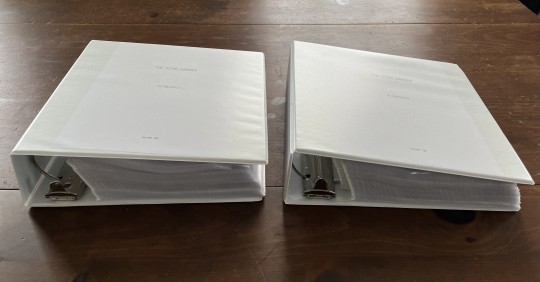

I went through the whole thing with a red pen, making as many corrections as I could find. I did a post about my most common mistakes (please learn from my mistakes!) but here's a quick recap of the major findings:
"if... then" NOT "if... than"
pouring vs poring -> "poring over data pads" is correct
reticules vs reticles -> "reticles" are what we want, "reticules" are little purses
reign vs rein -> "rein in emotion" is the correct one
how em dashes work
capitalizing in quotations

Then after all that was done, I went back through with gold pen and added little "fun facts" and bits of info because I thought maybe someday I could sell this massive tome, or use it for a raffle for charity, or something, and my author notes would add some interest and value :)
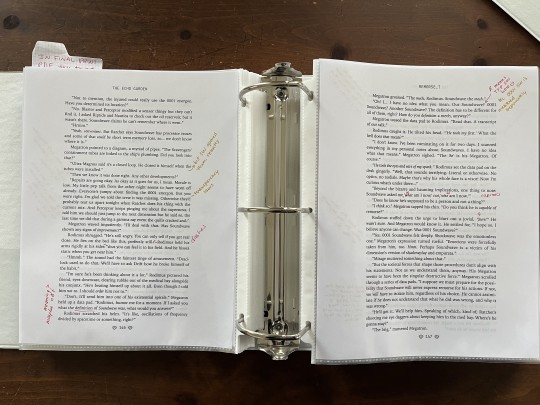
So for example in the above picture, the gold tid bits are as follows:
text: "Ultra Magnus said it's a closed loop. He closed it himself when the tubes were installed."
note: but Soundwave opened them recently (this was a note to myself- this line is to throw off the reader re: how Soundwave siphoned away the 0001 energon in the Scavengers' tubes)
text: I'm glad we told the crew it was missing. Otherwise they'd probably tear us apart tonight when Ratchet does his thing with the current mix.
note: transparency laws (here Rodimus is referring to an off-page meeting in which the leadership team told the crew the 0001 energon was missing. they did this because of the transparency laws they put in place)
text:
Megatron: "If I asked you what the definition of Soundwave was, what would you answer?"
Rodimus: "I… I have no idea what you mean. Our Soundwave? 0001 Soundwave? Another Soundwave?"
note: R means TFP SW here :D b/c 0001 SW is mentioned separately (when Rodimus says "Our Soundwave?" he means the TFP Soundwave that has boarded the ship)
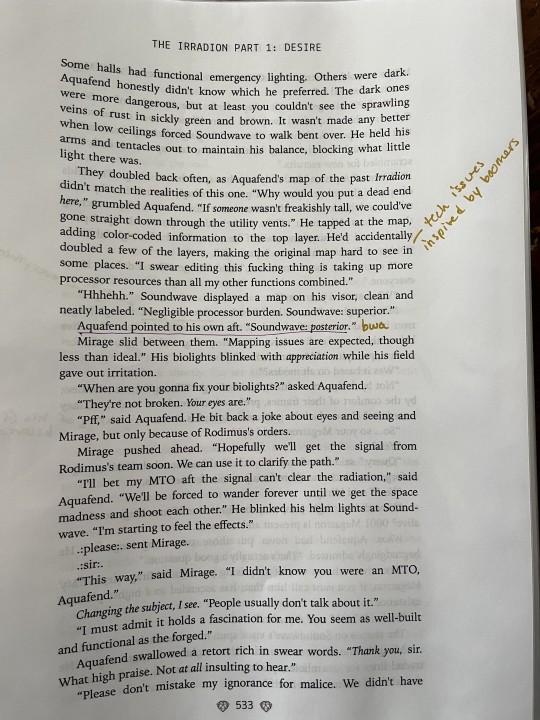
text: (Aquafend had) accidentally doubled a few of the layers, making the original map hard to see in some places.
note: tech issues inspired by boomers
text: Aquafend pointed to his own aft. "Soundwave: posterior."
note: bwa (I think this line is SO funny haha)
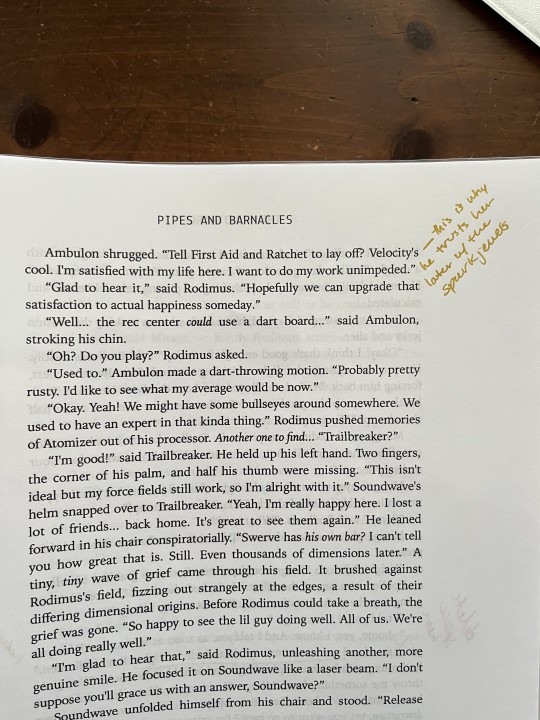
text: Ambulon shrugged. "Tell First Aid and Ratchet to lay off? Velocity's cool. I'm satisfied with my life here. I want to do my work unimpeded."
note: this is why he trusts her later with the spark jewels (by this I mean, it's very small and in the background, but Ambulon always defaults to Velocity as advisor or company over the other medics)
-
I did write a bunch of notes, but not on every page. I wanted to get going with making a typeset ebook available for folks (there's a link on AO3), and I do have the typeset PDF for anyone who wants to ficbind! I don't post that publicly, but I do give it out via email. Just email if you'd like to ficbind =)
So yeah! Right now these binders are just leaning against my bookshelf (in summer I use them to brace the door through the ever-present air pressure changes of a/c, lol). If I ever were to sell or give these away, I'd definitely go through and put notes on as many pages as possible. They're not on every page, but a good amount.
Thanks for the fun ask! =)
12 notes
·
View notes
Text
The copyright rant; re: crochet patterns
A reminder that taking an out of print pattern and scanning it or re-typing it and making it available for money or not does NOT give you any copyright over the pattern.
I see this a lot when I'm digging up vintage patterns on etsy and other sites. People who say, "I scanned it/retyped it, so I own the copyright."
First of all, no, you don't. That's not how that works. I pay for the patterns you offer because 1) I want them and 2) I think it's fair to pay you for digitizing the pattern.
In the US, crochet patterns are copyrighted by whoever first wrote them. I assume that if one writes a pattern for a company (Patons, Red Heart, etc.), then it's a work for hire situation much like comics. The pattern writer gets a one-time payment, and the company gets the profits from the pattern itself. That's just a guess to explain how it works. I assume that if there is copyright fuckery, the yarn company takes care of the legal shit, not the pattern writer that was hired by the yarn company.
This is important because a LOT of vintage patterns you can find for sale on etsy and ebay and other places aren't actually out of copyright (something around 70 years minimum in US law). They're out of print. So, technically, the yarn company could spend time tracking down the illegal reproduction and sale of their copyrighted material if they really wanted to make a fuss about things.
They don't do that because it's a waste of their time. Those of us tracking down vintage patterns and buying them from third-party sellers aren't hitting their bottom line. Because those patterns are no longer part of their bottom line. They're out of print.
But they ARE still under copyright for the most part in the US because they haven't met the age requirement to not be. And here's the thing: even if they ARE out of copyright in the US, that doesn't mean someone digitizing them puts them back into any sort of copyright.
It's like Pride & Prejudice, okay? You know why there are so many ebooks of P&P? Because it's in public domain and everyone wants to make a buck off of it. But none of them OWN P&P. No one owns P&P. That's what public domain means.
All of that being said, you know what is definitely still under copyright and reported by my ass when I find it on etsy? Patterns from books that are still in print. Not the books themselves, mind. Used book market is used book market. But people who have scanned individual patterns to sell even though the book is still in print.
I also get real fucking salty about people selling patterns that can be bought directly from the company or person who wrote them in the first fucking place.
THAT'S a copyright violation. Not sharing a vintage pattern you paid for because someone digitized it. Not digitizing the pattern itself.
Honestly, I get so tempted to take patterns from people who yell "I have copyright!!!" the most and just roll them out for free because 1) no you don't and 2) fuck you. Yeah, you digitized it. Thank you. But to act like you get the rights to any of it because you did that is bullshit.
Anyway, that's the copyright rant. Tip your servers.
#crochet#knitting#vintage patterns#vintage knitting#vintage crochet#i have one etsy seller on my eternal shitlist#because they claim copyright#and blank out the name of the original yarn#and use a huge fucking watermark
29 notes
·
View notes
Text
Book Depository is shutting down on the 26th of April and in some ways, that's good, because now I can re-direct mostly Americans to book sellers that are NOT owned by Amazon.
But, before I do that, I would like to apologize to a lot of non-Americans who relied on BD to buy harder to find books that are not available in your country. I don't have many alternative resources to offer you because I'm only familiar with what works in America but I welcome any additional comments offering said alternatives.
For everyone, including people who aren't in America, I can offer only this:
Bookfinder: I'm including this first and foremost because you can put in your book title, what country you're in, and it'll do its best to find booksellers and list them by price (WITH shipping already included in that calculation). This DOES include amazon and amazon owned companies. I recommend looking up companies and seeing if they are owned by amazon because a lot are (like BD, like abe books). I won't shame anyone who relies on amazon because sometimes amazon/amazon-owned companies are all that's available. I just want to recognize that Amazon is controlling the flow of available media is a problem.
For Americans (and possibly other countries):
Betterworldbooks
Book Outlet
Bookshop: Supports local book sellers
Discover Books
Thriftbooks
I also recommend shopping locally! Indiebound will help you find local book stores.
But if that also fails you, a good method to finding cheaper books without supporting amazon... is to use amazon. Check amazon listings and under paperback (or hard cover), there will be a link saying "other new, used, and collectible." Click that, look up the names of the sellers listed there, and see if they have their own selling platform off of amazon.
If you are still being failed, check your local library. Use apps like hoopla/overdrive/libby/kanopy (the latter being for film). Go INSIDE your local library and see if they have books for sale--some libraries have year round book sales, some have blow out sales just once or twice a year. With books going for 50 cents, a dollar, three max. Lots of people donate NEW, NEVER READ books to these sales.
If you still can't find the books you are looking for, I do recommend piracy. But PLEASE do not publicly share links to good piracy sources on this post. Spreading them publicly is how resources get fucked over. Please communicate more privately. But my one piece of advice is... "[book name] [ebook file type you want] download" is always a good place to start. Look up what file type is best for the device you wanna use, it's so easy.
#books#book sellers#book sales#i also recommend just going directly to publishers websites#and subscribibg to their emails#becaues they'll post available sales#and will often hav ea choice of sellers to buy through
51 notes
·
View notes
Note
is copywriting a good job to look into as a writer? im job hunting and i see quite a few openings online but im worried the work will be extremely dreary
i didnt set out to be a copywriter -- frankly when i graduated i had no idea what i wanted to do. i spent about three and a half years freelancing and doing gig work and i'd make like 140 bucks a month on a good year. i happened to apply for a copywriting job among a sea of other entry level things -- social media coordinator, communications associate etc. and i feel SOOOOO fucking blessed that i fell into copywriting
in terms of money: copywriting is very lucrative if you get the experience for it and stay the course. my very first position with no prior copywriting experience (just freelance writing experience) paid me 35/hr. starting off you'll probably make about 50k but moving up the hierarchy can pay a LOT. with four years of experience, during my job hunt i would say the vast majority of the positions i interviewed were within a six figure salary band. moving up the hierarchy, lots of senior copywriters make six figs, and some associate creative directors make over 200k. you can definitely live comfortably as a career copywriter if you play your cards right.
in terms of work: personally i love copywriting, but it's an arm of marketing. if you cant stomach writing marketing materials or learning how marketing works, it might not be for you, but i kinda make it into a game in my head. there's a lot of different kinds of copy -- short form (landing pages, social media blurbs, headlines, emails, product descriptions etc) and long form (white papers, SEO articles/blog posts, ebooks). i would aim to find a copywriting position that will have a wide scope of copy types, because that helps cultivate a well-rounded resume (i.e. shoot for a job that'll have you writing landing pages, emails and blog posts etc over one that's just headlines and captions).
there is also B2C (business to customer, as in marketing a consumer product to individuals) and B2B (business to business, as in marketing a product like mailchimp to a business). i mostly do B2C, but I also do B2B now. it's fine to start with just one, but i'd say right now demand is very high for B2B
the good thing about copywriting is that basically any industry requires it in some capacity. i've worked predominantly in entertainment and digital media, but right now i'd say the biggest demand is in healthcare, fintech and SaaS (software). i freelance for a telehealth company right now in part because i want to make my portfolio more well-rounded. but as i said, nearly any industry can need one -- hospitality, beauty, fashion, retail, nonprofits, anything that is a business that needs to be advertised. when i started, i worked in television, which meant my days largely consisted of watching shows before air and writing episode descriptions. i had a lot of fun!
personally, i dont find my work dreary. sometimes it can be a LITTLE tedious if i'm writing something more technical/internal, but the whole point of copywriting is to figure out how to entice someone to check something out, which means puzzling out how to write something fun and engaging. if you want something less marketing-focused, i would look into getting into technical writing. this is basically writing informational texts and guides for technology and similar things. it pays VERY well and is usually in high demand, but i will say it's definitely more tedious than copywriting.
in short: yes i love copywriting and you can be very financially stable in it! i'd argue it's one of the most financially comfortable day jobs for someone with writing experience. happy hunting anon!!!! i hope u get what ur after
10 notes
·
View notes
Text
Dollars to Donuts
Dollars to Donuts, Curlicue Games, 2018
Dollars to Donuts (D2D) takes place inside a donut shop where bakers and servers rush to get donuts to patrons. It could easily have been one of those "better as a board game" setups, but there's more going on here than just a simple game mechanic and some talking.
I say "donut shop", but the way it's described the location really sounds more like a diner. The art backs that up. It's black-and-white photos of a 50s-style diner, including bakers, waitresses (and a waiter), and various folks sitting at the bar with their donuts and coffee. The photos are very nicely done. They're definitely not actual period photos. I can tell because there are multiple non-white people in them. Might be stock art, might be original. Either way, they work.
One of the rare features of D2D is "troupe"-style play. The game most people think about for troupe play is Ars Magica. It's not required, but Ars assumes that each player will have three characters: one mage, one companion (a favored, highly skilled non-mage), and one "grog" (warrior or servant). You can thus play scenarios at multiple different levels of power. Normally you all play a particular level of character at once to keep things balanced, but if everyone's ok with it you could have a mixed group.
In D2D, everyone has three characters: a baker, a server, and a patron. You're expected to switch between them fluidly as the game plays out, basically responding with the right character when someone calls their name. I can imagine this getting very chaotic and potentially stressful. However, if you have the right group of improv-friendly players, I can also imagine it really getting across the hectic feel of a busy diner.
The three character types have different game stats. Bakers have three attributes: Quality, Speed, and Efficiency. Servers have three gauges instead - you spend points from them as the game goes along. Those are Kindness, Agility, and Poise. Patrons have two negative attributes - Worry and Trouble - and one negative gauge - Hunger. They also have Issues, each of which is tied to either Worry or Trouble. If you play multiple sessions of the game, the patrons come in with a new set of Issues every time. Any continuity in their situation is entirely up to the play group. Play mostly revolves around resolving the patrons' issues without having their Hunger score go too far into the negative.
The dice mechanic is a simple d6+attribute, with two target numbers. Roll high and things go well, low and they go badly, and in the middle there's either no change or some of each. Points in gauges get spent to adjust the die roll upwards or downwards. There's also a timer involved (one per player, actually) and a few minigame-type setups for person-specific tasks.
D2D is in a weird space that's part one-shot LARP and part board game. I think that pushing it more solidly one way or the other could have resulted in Curlicue Games having a better final product. They threaded the needle, but the thread is a little bare for having gone through. My strongest suggestion, if this were to stay as an RPG, would be to make it explicitly GM-less, instead of just giving the GM practically nothing to do. Really, it just needs to lean in a particular direction.
Dollars to Donuts is available in Kindle format via Amazon's impenetrable AI-filled maze of schlock ebooks. I sent a suggestion that they might want to make it available in PDF, but they'll probably also want to fix up the book's trade dress so that certain major donut companies don't sue them.
#ttrpg#imaginary#indie ttrpg#rpg#america flees from dunkin#review#i feel like the “dollars to donuts” bet would have been a very different thing back before donuts cost more than a dollar each
7 notes
·
View notes
Text
What It Means To Be A “Projector” in Human Design
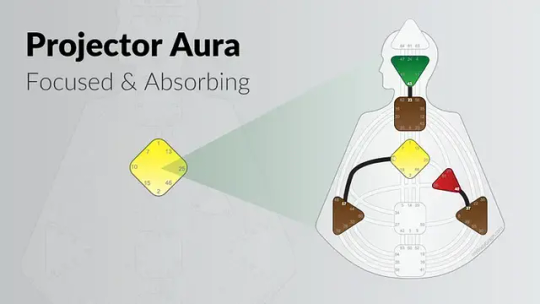
A good starting point for projectors who have recently learned their design type.
Projectors are meant to guide energy types.
The energy types are manifesting generators and pure generators. They are referred to as “energy types” because of their defined sacral center. Projectors aren’t necessarily here to guide the other non-energy types, such as manifestors and reflectors, but with the right invite, they can.
A projector’s strategy is to wait for the invitation.
In human design, “strategy and authority” refers to an energetic approach.
Although every projector must wait for the invite, their individual authority will differ. These authorities are: emotional, splenic, mental, self-projected and ego. For the best outcomes, an invitation should only be accepted or declined once confirmed by the authority.
The successful projector waits patiently to be invited and recognized for their unique skills.
Without proper recognition, the invite is dead.
Projectors have a penetrative aura. Because of this, their energy can come off as “pushy” or even “annoying.” Recognition allows the projector to feel seen, heard and confident in sharing their insights with others in 1:1 (preferred) and group settings.
Projectors only need to be invited for things along the lines of: giving advice, moving out, getting into a relationship, friendship and career movement.
Outside of that context, the world is a projector’s oyster.
You have to know that you have everything you need to reach your signature of success. First and foremost, energy management should be your focus. There’s not a lot of information online about practical, actionable steps projectors can take to achieve success because it is our job to create the system that leads to our success!
And self care is extremely important.
Working a 9–5 without the proper recognition/invitation will almost always lead to bitterness, the not self-theme, which could take years to recover from.
Projectors need to focus on energy management.
Taking care of yourself by resting, playing and learning skills that fascinate you will make you more susceptible to receiving invites.
And every invite isn’t meant to be accepted — that’s where authority comes into play. Being in the wrong environment will always bring about humiliation and/or bitterness for the projector type. Accepting the wrong invites will also lead to a series of unfavorable invites.
Projectors must be selective of the company they keep and the environments they frequent.
The waiting period for a projector can be long and boring at times, but that’s why they must keep themselves occupied with self care, fun, nature, rest and skill building habits.
Projectors ought to study skills tailored to their personal interests so that they’re ready for the invite when it comes. For example, if you want a relationship, work on your self love and treat yourself like you’re worthy of having a partner. Affirmations are a projector’s best friend in any capacity.
The insight and attention projectors have to offer is extremely valuable.
They must not allow the concept of “waiting for the invitation” to get in the way of living life, either.
As long as the projector isn’t giving away unsolicited advice and inviting themselves in situations that involve other people, they will be fine. The world is moving away from the “work hard” to “work smart” mentality. Projectors are being called to take their position in the world and show what they know.
What do you think of a human design projector guide filled with practical insights?
Use Projector Insights: How to Live Your Human Design as a resource. This eBook is a digestible reference point for projectors who are new to human design and those who are looking for more practical information.
youtube
An article from Fe Chi's blog. This information is not to be copy/pasted.
#human design#projectors#hdprojectors#astrology#spirituality#mindfulness#psychology#mental health#waiting for the invite#human design projectors#astro#definedcenters#humandesigninsights#projectorinsights#ebook#Youtube
11 notes
·
View notes
Text
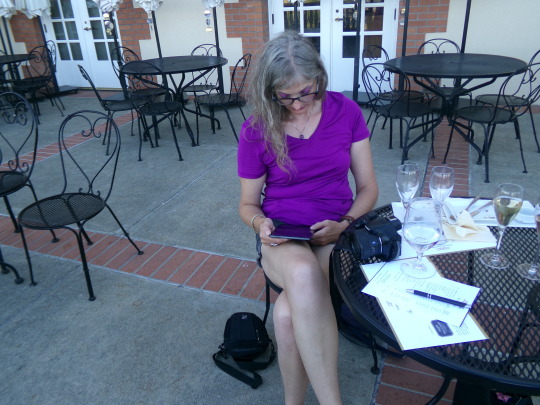





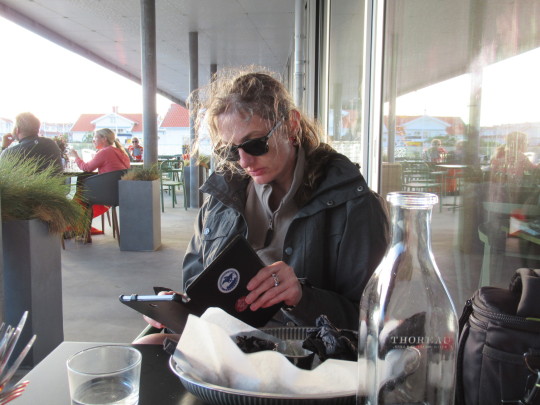
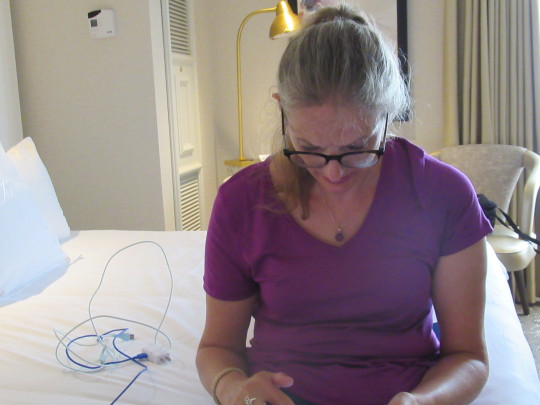






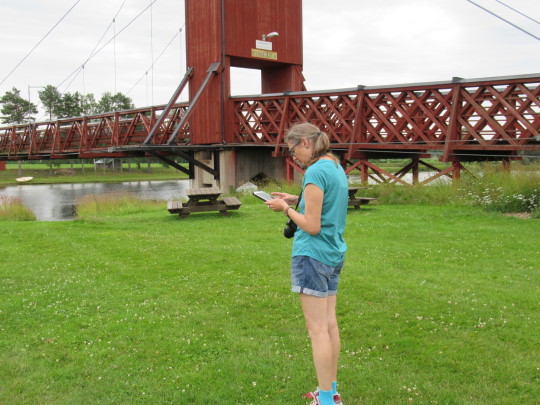


Read An Ebook Day
Get lost in the world of a book, whether new or an old favorite, without the hassle of lugging it around, holding it up, or damaging it. That’s right, read an eBook!
Years ago there was a giant push to encourage reading among youth and adults alike, and that push has entered the modern age with International read an eBook day.
No more are we tied to reading books in the old format with two covers and hundreds of pages, no more do hundreds of trees have to die each year to bring literature to people from every walk of life.
With the invention of the eBook, we have reached the point where the wonder of reading is available to anyone with the computer or portable electronic device.
It’s become a huge industry, with devices like Kindle, Nooks, and apps available on many types of devices like cell phones and tablets.
Learn about Read An eBook Day
Read An eBook Day is a day that encourages you to do exactly that. eBooks can easily be accessed within a few seconds. You don’t need to head to your local book store or a library. By the time it takes you to finish reading this page, you could have your eBook chosen and you could be getting stuck right into it! But don’t dash off just yet!
eBooks give you the ability to take the authors and stories you love with you anywhere and enjoy them at any time. Whether you are 30,000 feet in the air or you are curled up on your sofa, you can tuck into a great book.
If you have never tried reading an eBook before, this is definitely the perfect day for you to read your very first one. If you are a big eBook fan already, not only is Read An eBook Day a great day for you to start a new book, but you can also use this day to raise awareness and encourage other people to start reading eBooks as well. You can post messages on social media so that your friends, family members, and followers know that it is Read An eBook Day and the importance of participating.
History of Read an eBook day
The first major celebration of International read an eBook day was in 2014, and was put together by a major eBook distributor OverDrive. This company provides eBooks through many major locations but is best known for being the biggest provider of eBooks to libraries all over the country.
Its eBooks are supplied by thousands of publishers, including the best known of Penguin Random House, HarperCollins, Harlequin, Pursues, Wiley, and others. Chances are if you’ve read an eBook from a library, it was supplied by OverDrive.
How to celebrate Read an eBook day
The most obvious way to celebrate is by, you guessed it, reading an eBook. But you can go so much further than that, take a bike ride with your tablet out to your favorite place and sit in the park, on the docks, in the forest, or wherever your favorite reading hideaway is and enjoy the lightweight convenience of reading your book on an electronic device.
That’s just one of the joys of an eBook, you can carry dozens or even hundreds of them around on a single compact electronic mobile device, which ways less than even the smallest of paperbacks.
Get together with your friends and talk about your favorite eBooks and where you discovered them, and even talk about what your first eBook was. In today’s modern world it’s even possible that your first book outside of school and the library was read in an electronic format.
Reading an eBook allows you options totally unlike those of reading a normal book, wherewith a physical book you’d have to bring a light and a magnifying glass if the print was too small, with the mobile device you can just increase the font size and brighten the background.
You can even read an eBook in circumstances you couldn’t read a normal book like tucked away under your blankets in the dark, no flashlight required. Internation read an eBook day is a tribute to the growing future of electronics in our lives, and they’re now serving as the foundation of supplying educational, technical, and even entertainment-oriented books in every day and every format.
Even the instruction manuals that come with many of our new devices are PDF eBooks, and most video games no longer provide a physical book, it’s all online.
Another way to celebrate Read An eBook Day is to finally publish your own eBook so that other people can read it on this day! eBook publishing can appear somewhat of a mystery for those new to online publishing. There are lots of subtle complexities to making your novel launch a success, and professional book publishers are the main way to ensure that none of these procedures is missed. It can be easy to overlook the strategies and layout elements that must be implemented to make your work a best seller.
Finishing your novel is not the end of the story – literally. It’s only the start of a book’s journey from manuscript to book store. Have you decided on a book cover? Have you thought about your marketing schedule? Are you aware of your audience? These are the sort of things to consider on this day to help you take your content from hobbyist to professional, from your office drawer to the highest part of the eBook best-sellers list.
If you’re an aspiring author looking for a little guidance, why not take a creative writing course on Read An eBook Day? This will help you with all facets of composing a fictional work; you’ll soon learn how to master your plot and develop your characters with various tutorials. How about the final draft of your book?
You may be surprised to understand how few publications online have had professional editing skills applied to them. Having your literature carefully proofread and adapted by a team of expert editors is an amazing way to make your work stand out of the crowds. These are all the sorts of steps you can take on this date, depending on where you are right now in the process.
Source
#USA#Canada#Sweden#Whitehorse#Boston#Cincinnati#travel#original photography#vacation#tourist attraction#landmark#architecture#cityscape#landscape#Read An Ebook Day#18 September#ReadAnEbookDay#indoors#outdoors#Bellagio - Las Vegas Luxury Resort & Casino#Loews Miami Beach Hotel#Yellowstone National Park#Domain Carneros
2 notes
·
View notes
Text
What kind of online business?
Online businesses vary greatly in terms of their structure and focus, catering to a wide range of niches and industries. Here are some different categories to explore:
E-commerce: This involves the sale of physical products online through platforms like Shopify, Amazon, or Etsy.
Digital Products: Creating and selling digital products such as ebooks, online courses, software, or downloadable templates.
Subscription Services: Providing subscription-based services where customers pay a recurring fee for access to exclusive content, products, or services.
Affiliate Marketing: Promoting products from other companies and earning a commission for each sale made through your referral.
Dropshipping: Operating an online store without the need to hold inventory. When a customer makes a purchase, the product is shipped directly from the supplier to the customer.
Freelancing: Offering services like writing, graphic design, web development, or consulting on platforms such as Upwork or Fiverr.
Blogging/Vlogging: Creating content within a specific niche and monetizing it through advertising, sponsored content, or affiliate marketing.
App Development: Developing and monetizing mobile apps through app stores or subscription models.
Online Consulting/Coaching: Providing expertise in a particular field through one-on-one coaching sessions, webinars, or group coaching programs.
Print-on-Demand: Designing custom products like t-shirts, mugs, or phone cases and selling them online without the need to hold inventory.
These are just a few examples, and the opportunities are vast. The most suitable type of online business for you will depend on your interests, skills, resources, and target audience.
onlineshopping #onlineshop #fashion #business #entrepreneur #digitalmarketing #onlinemarketing #blogger #style #hustle #love #entrepreneurlife #entrepreneurship #workfromhome #stylish #dresses #makemoneyonline #smallbusiness #marketing #moda2019 #followforfollowback #likeforlikeback #dressesforsale #onlineboutiqueshopping #liked #soirée #womeninbusiness #hustleharder #photooftheday #motivationalquotes

#digital marketing#youtube video#website seo#smallbusiness owner#ecommerce#seo#marketing#original art#online business
2 notes
·
View notes
Note
Heya! Thanks for sharing a bit of your selfpub journey. I'd like to know how you managed the pre-order gifts? I'd like to do something like that, but I don't know how to technically do it. Thanks for your answer! @winglesswriter
Of course!
I did both pre-order gifts and ARC distros before the actual release. Because I wanted to give ARC readers a one-month lead, I decided to announce pre-orders two months out. I figured announcing them at different times would avoid confusion between the two options (get the ebook free w/ no gift, or pre-order the book and get a gift).
Here's how I handled the pre-order prep:
5ish months before release: design the gifts. for me, that was a sticker and a bookmark, since those can fit in a standard envelope. (for ARMV, I also painted a watercolor and turned it into a PDF as a digital gift. for TSS, I gave the first three chapters as a digital gift.)
4 months before release: order the stickers and bookmarks. for this recent release, I ordered my stickers through CustomSticker and my bookmarks through UPrinting. I do recommend these companies, I had good experiences with them.
3 months before release: set up the pre-order gift sign-up form through CognitoForms. The buyer only needs to enter their name, email, and physical address (email for digital gift, physical address for sticker and bookmark). I marked all fields as optional in case they don't want both types of gifts.
2 months before release: announce pre-order gifts via website, newsletter, and social media. make sure you have envelopes, stamps, and cards if you want to write a personal note!
Obviously, there are ways you can make this easier on yourself. You could:
order gifts that someone else has designed (etsy, redbubble, etc.)
do digital-only gifts to cut down on gift and postage costs
do physical-only gifts to cut down on what you're juggling
For me, I knew I wanted them to be custom gifts, so I was willing to put in the extra time and effort. I was operating at a loss, but honestly whatever. It's my launch, I'll do what I want with it, and what I want is Fun Things.
11 notes
·
View notes
Text
Understanding Publishing Your Book: Aspiring Entrepreneurial Authors
Introduction
Publishing a book can seem like navigating a labyrinth. The multitude of options—traditional publishing, self-publishing, hybrid publishing—each with its own process and nuances, can be overwhelming. Fear not, aspiring author! This guide simplifies the complex world of publishing.
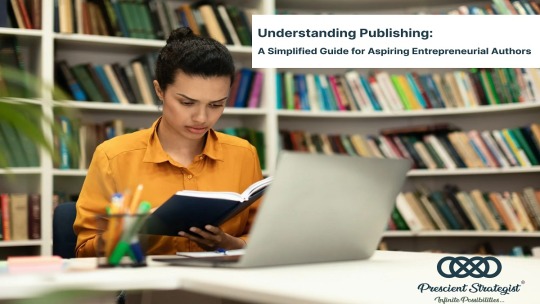
The Challenge:
Understanding the publishing process can be a daunting task. With terms like literary agents, book proposals, royalties, and copyrights, it’s easy to feel lost.
The Solution:
Here’s your simplified guide to understanding publishing:
1. Explore Your Options:
Understand the pros and cons of traditional publishing, self-publishing, and hybrid publishing. Choose what suits your goals best. Let me help you by explaining them in brief in a generalized manner.
Traditional Publishing: This is the classic route where a publishing house takes over the publishing process. They handle editing, design, printing, marketing, and distribution, and often provide an advance against royalties. However, getting accepted by a traditional publisher can be tough, and it requires patience as the process can be slow. Also, once your book is published, the publisher retains most of the control, including the rights to your book.
Self-Publishing: In this route, you act as your own publisher. This option gives you complete control over the creative process, rights, pricing, and profits. With platforms like Amazon Kindle Direct Publishing, you can publish your book in eBook and paperback formats, making your book available to millions of readers worldwide. However, it’s important to remember that you’re responsible for the quality of the final product, which means you might need to hire professionals for editing, cover design, and formatting. Marketing your book is also entirely up to you.
Hybrid Publishing: This is a blend of traditional and self-publishing. You pay a hybrid publishing company to handle the professional publishing process (editing, design, printing, distribution), but you keep the rights to your book and receive a higher royalty rate than in traditional publishing. You still have creative control over your work, but you also get professional support. It’s important to thoroughly research hybrid publishers and check their reputation, as this industry has a mix of both, highly reputable companies and those that just seek to profit from aspiring authors.
2. Learn the Lingo:
Get familiar with publishing terms—literary agents, book proposals, royalties, copyrights. This knowledge will be your compass in the publishing world. So, let us understand what these words mean.
Literary Agent: This is a professional who represents authors and their written works to publishers and film producers. They negotiate contract details and try to secure the best deal for their clients. Some publishers only accept manuscript submissions from literary agents.
Book Proposal: This is a document most commonly associated with non-fiction writing. It usually includes a title page, table of contents, sample chapters, market and competition evaluation, and the author’s biography. A strong book proposal can be a key tool to secure a publishing contract or a literary agent.
Royalties: This is the payment made to an author from the sales of their book. The royalty rate can vary depending on the type of publishing (traditional, self, or hybrid) and whether the book is in print, eBook, or audiobook format.
Copyright: This is a legal term used to describe the rights that creators have over their literary and artistic works. As an author, you hold the copyright to your work as soon as it’s created. This means you have the exclusive right (or can grant permission) to reproduce, distribute, and display your work.
The world of publishing can be complex, but understanding these key aspects can set you on the right path. With knowledge in hand, you can make informed decisions on how best to bring your book to life.
3. Network:
Connect with published authors. Learn from their experiences. They can provide valuable insights into the publishing process. One such place is TLC Mastermind community where there are more than 180 published authors and in current date more than 220 members from various walks of life are getting help from experience mentors to write & publish their book.
The publishing world might seem intricate, but with the right knowledge and guidance, you can navigate it successfully. Remember, your journey to becoming a published author is a marathon, not a sprint. Take it one step at a time, and you’ll cross the finish line.
#author#writer#entreprenuership#entrepreneur#coach#coaching#prescientstrategist#business#leadership#motivating quotes#businesscoach
3 notes
·
View notes
Text
No I ranted about this in the tags of some random post I reblogged a little bit ago but I need to talk about this person and the absolute boldest that I experienced from them in the same hang out (I only hang out with them in group settings)
So first we got this Jennifer's Body bs.
(rant under cut)
I was talking about how I had seen the movie Ginger Snaps recently for the first time and I really enjoyed it and that it is very much similar to Jennifer's Body because of the themes of around girlhood and coming of age to then be objectified and taken advantage of by other boys and wanting that control back.
(Granted all I said was it's similar to Jennifer's Body before they jumped in and went: I don't like Jennifer's Body.)
And like I'm usually pretty open minded and also I was just so stunned I asked why.
And they say to me "Yeah the comphet storyline is just done poorly in my opinion and was really misogynistic"
And then when I tried to disagree with him he cut me off and told me it's fine we can disagree. We all have our opinions. MEN. I swear to God. (I should clarify they are 19 so that means that they are still learning but I just don't like the way he approaches it at all and its like he doesn't care about learning about the stuff he says that may be offensive or wrong) And then LATER
I'm talking about how I'm sad I have to wait for the second book in the series to become available at the library when I'm almost finished with the first book.
he goes "the way you won't just pirate the book" (which is actually incredibly difficult to do but they don't even read, they only read manga, so they wouldn't know that but that's beside the point.) BUT imagine telling someone who you know is a writer and wants to be an author one day that they should just pirate the book and then get confused why there are moral reasons I don't??? Like that's my community.
And then he didn't get how borrowing from a library is different than pirating. Which fair not a lot of people get but when I said the library forms a contract with the publishing company to have access to the ebook of a book for a set period of time (which they pay for) and if no one checks out the book they will just not renew the contract or a lot of people check out the book they'll renew and potentially buy more copies of the book
they still didn't get it. and just went I don't understand. And then I tried explaining it again and they eventually said ah I just pirate all my manga.
as if theres not an entirely different culture surrounding that type of media and it's also harder to find manga in libraries in america in the first place. (so while I wouldn't promote just reading free copies online of manga if you can help it - i also wouldn't tell you you are absolutely horrid person for it.)
#neither time was I asking for their opinion or looking for an intellectual conversation#both times I was the only one willing to use my brain for more than five seconds#like don't ask why and when i explain it very clearly act dumb like you don't understand#they also just routinely undermine me#like saying “Oh i wouldn't trust you with a bo staff like i'd be afraid you'd accidentally hit me”#as if I'm not literally trained in martial arts and have literally passed a test on handling a bo staff for months before taking said test#like i get i tend to play dumb and make jokes at my expense sometimes but also come on man#I also find I can't stand playing oppositional boardgames with him#because he tends to be right when he corrects me in game#and it pisses me off because he gets proven right#whereas irl when i correct him its just agree to disagree i'm not willing to even hear you out#he also said that bo staff comment the same night while we were in a halloween store and I was messing around with some of the props becaus#i like to pretend they are bo staffs. so it's like three comments in row directly targetting me for no reason#and I'm kinda over it#I feel bad about it because it might make our one friend a bit uncomfortable who also never weighs in when these comments are made#but like#I'm not putting up with that shit
4 notes
·
View notes
Text
Open Access Resources
To kick off the project, here is a master list of open source archives, organizations, and other educational projects. I will frequently add to this over time and will gladly accept suggestions for more. These aren't in any organized order, they're just added as I think of them or are informed of more.
Disclaimer: I can't guarantee that everything in this master list will be totally accessible to everybody due to a disability, and I apologize if there is anything that isn't. If you notice an accessibility issue, or any other issues with what's on this list, tell me and I will add a disclaimer under it or fix it if it's an issue from me.
Everything on here is free, though.
Project Gutenberg (www.gutenberg.com)
Project Gutenberg is a completely volunteer-run online library founded by Michael Stern Hart in 1971. He was the inventor of e Books and believed in making books as easily accessible and distributable as possible. The website has over 70,000 public domain digital books and they add more very often. There are options to read their books on the website browser, through multiple downloadable file types, in plain text, without pictures, and some even have human or machine narrated reading options. There are many books on the website that are not in English or have non-English translations. You never need an account or are required to share any of your personal information with them to access anything on the website.
Open Library (www.openlibrary.org)
Open Library is another digital archive of online eBooks available for free. It is part of the broader Internet Archive. They share a similar goal of uploading every book published for easy and free access. Some of their books are public domain and others aren't. The ones that aren't you need to borrow from the site, either for one day or 14 hours depending on if the book is fully borrow-able or not. All the books they have also have audio versions, and their open access books are downloadable in either PDF or e Pub form. You need an account to borrow books from them, but not to read their open access books.
Crash Course (www.thecrashcourse.com)
Crash Course is a YouTube channel founded by Hank Green and John Green in 2012, initially created through the YouTube Original Channel Initiative and has since branched out into it's own company funded by community donations on Patreon. As stated on their website, "[The people at Crash Course] believe that high-quality educational videos should be available to everyone for free." They make fast-paced, easily understandable and processable educational videos on a broad range of topics ranging from science to humanities. They have over 45 published courses to date which include topics above a high school or primary school level. As far as I'm aware, all of their videos have closed captions and you don't need to have the ability to see the videos to understand any of their courses. They also have videos in Spanish and some directed towards children.
SciShow (www.scishow.com)
SciShow [pronounced Sigh Show], like Crash Course, was also founded by Hank Green in 2012 as part of the YouTube Original Channel Initiative. It's very similar to Crash Course, but they cover scientific topics exclusively. They have three separate YouTube channels currently alongside the original Sci Show channel: Sci Show Space, Sci Show Psych, and Sci Show Kids. Each respectively focuses on astronomy, psychology, and kid's content. The first two aren't currently making videos anymore, but they still have all their videos up on those channels. Most of their content is centered around more obscure topics that many people don't understand, have misconceptions about, or haven't heard of. Like Crash Course, I believe their videos all have captions and don't require the video footage to be seen in order to understand, but I would need somebody to verify that for me to say for sure. Unlike Crash Course I believe their videos are often shorter and more condensed because they don't normally cover broader topics.
Unfuck Your Habitat (www.unfuckyourhabitat.com)
Unfuck Your Habitat is an open source website full of information about cleaning and tips for doing so. The website has a strong focus on making cleaning easier for people that are mentally ill, physically or mentally disabled, or have a lot of trouble cleaning for personal or environmental reasons.
Their way of approaching things is very blunt and simple, and they use language that isn't complicated or confusing. It could potentially come off as not being serious, which some may like and some may not. They curse a lot so if you don't like cursing you might have a problem with it.
It's full of text based articles and as far as I'm aware there isn't any option for audio. Unfortunately I'm not very familiar with how screen readers work yet so I can't say for sure if it's possible to use one on their website. They also have two books written by Rachel Hoffman with similar names:
Unfuck Your Habitat: You're Better Than Your Mess
Cleaning Sucks: An Unfuck Your Habitat Guided Journal for Less Mess, Less Stress, and a Home You Don’t Hate
You need to pay for those, though, and I don't know if they have audio book versions or if you can read them with a screen reader.
#education#science#history#books#ebooks#audio books#stem#cleaning#project gutenberg#open library#crash course#sci show#unfuck your habitat
6 notes
·
View notes
Text
Difference Between Inbound And Outbound Marketing
Inbound marketing is a form of marketing strategy wherein a company tries to drive its potential customers to its websites. This is done through a variety of ways including blogging, Search Engine Optimization (SEO), posting quality content on social media, videos, infographics, sending newsletters, podcasts, whitepapers, ebooks, webinars, and more.
The main objective of inbound marketing is to deliver such content which is of use to the customers and attracts them along with pursuing them to be engaged with the website. The modus operandi of inbound marketing is to write quality content that drives a user to the website, engages them, attracts them, makes them aware of the brand, and finally converting the user into customers as well as loyal followers.
There are several techniques of inbound marketing as stated above. One of such very popular techniques is Webinar. A user always does not have enough time to go through a 2000 word article. he/she might just want to get an idea about a brand without wasting time on reading. To cater to such customers webinars can help.
Webinars basically are seminars the only difference is that webinars are conducted through the internet and seminars are conducted in an auditorium or a hall or a classroom. The advantage of a webinar is that a specialized person of the company can deliver details about the brand in a very effective and engaging way, without consuming much time of the consumers and also in a very interesting manner.
What's More Effective, Inbound or Outbound Marketing?
Outbound Marketing on the other hand is a traditional kind of advertising wherein the company promotes itself and the brand to get more sales. Under this kind of marketing strategy, a marketer tries to deliver messages to its potential customers. They do this just to know whether the people out there possess any interest in their brand. To understand this let's look into an example: under outbound marketing, the most common marketing strategy is door-to-door sales and cold calling.
Under this technique, a marketer pays visits to people's places without having any idea whether that person could even be a qualified lead. Other techniques of outbound marketing are spreading awareness through direct mail, radio ads, television ads, trade shows, and telemarketing. Outbound marketing is also referred to as interruption marketing because they usually interrupt a person's time without any consent from that person. For example, a person having dinner watching a movie on the television will be interrupted if there is a sudden telecast of an advertisement of a particular brand.
He might also get disturbed if he gets a call from a telemarketer. Thus, outbound marketing is basically when a company tries to approach people just to get more and more sales and to get a profitable share in the market. Companies usually rely on this type of marketing strategy as they think it has a mass reach and so the companies tend to spend about 90 percent of their marketing budget on this kind of marketing
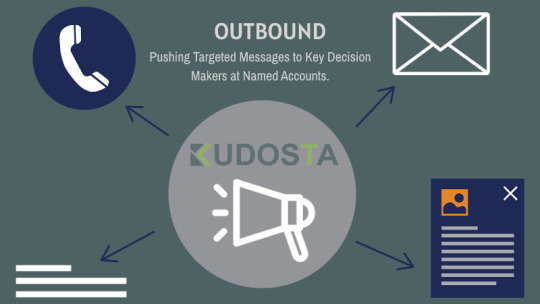
Finding the Right Marketing Strategy for You
In a book called "The New Rules of Marketing and PR", David Scott argues that using inbound marketing businesses can "earn their way in" (for example, by publishing useful articles on their website) in contrast to outbound marketing where they "buy, beg, or bug their way in"(through traditional forms of advertising or through cold calling).
Another distinction between both marketing strategies is that adopting strategies that fall under outbound marketing tends to consume a lot of time and effort and usually do not yield lucrative results. It has often been noticed that this strategy sometimes fails to offer even a single lead. On the other hand, an inbound marketing strategy if adopted gives a company the power to engage with people thus eventually converting a potential lead to an actual lead.
Outbound marketing as referred to as interruption marketing sometimes might interrupt a person's personal or work time thus, failing to interest the customer and instead irritating him/her. Whereas, nothing of such applies to inbound marketing as the aim of this strategy is to attract customers through delivering them quality content.
Outbound Marketing strategy tends to seek out customers while inbound marketing strategy attempts to draw in customers. Some marketers are of the view that outbound marketing instead of not yielding the desired results is chosen because of the fact that one can measure its effectiveness. But the same does not apply to inbound marketing, under this strategy a marketer cannot measure the performance and also cannot quantify the results they are getting through using this strategy.
Hence, both the marketing strategy has its own set of advantages and disadvantages, it clearly lies in the hands of the company to choose one which best suits its marketing objectives. Contact Kudosta Team.
#php development#wordpress development#custom web design#web development#ecommerce web design#wordpress website#seo services
3 notes
·
View notes